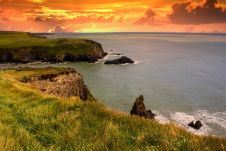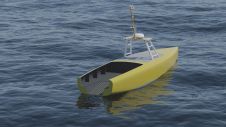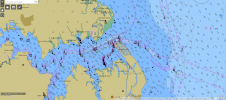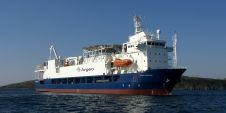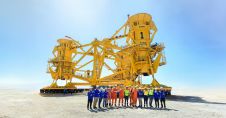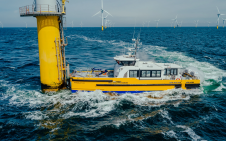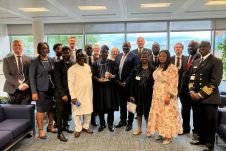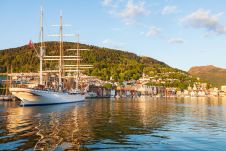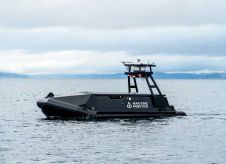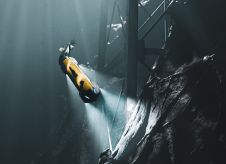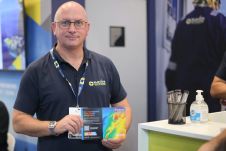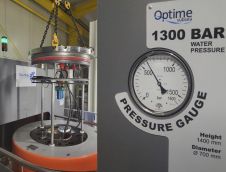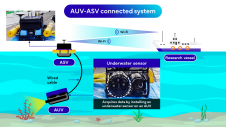Australasian Hydrographic Society
News
East Australia Region
The headquarters of the Australian Maritime Safety Authority in Canberra was the venue for an East Australia Region General Meeting on Wednesday 11th August 2004. Our thanks go to Nick Lemon for making the necessary arrangements and for organising the subsequent dinner in a nearby restaurant.
During the meeting, the Hydro-grapher of Australia, Captain Bruce Kafer, RAN, brought us up to date on the activities of the RAN Hydrographic Service. At sea HMASs Melville, Mermaid and Paluma have been surveying off Arnhem Land, Northern Territory to improve charts of the area bounded by this complex coastline to facilitate surveillance activities. Meanwhile, HMAS Leeuwin has been surveying around Melville and Bathurst Islands and in the approaches to Darwin to supply improved bathymetric data to cater for the deeper-draught vessels now plying the Port of Darwin. HMASs Benalla and Shepparton have been surveying in the hitherto mostly unsurveyed Napier Broome Bay area of northern Western Australia to facilitate surveillance operations. In this latter area, life is made more interesting for boat camps and those working close inshore by the obvious presence of large, and one has to assume hungry, crocodiles!
The US$32 million project to establish a Digital Hydrographic Database (DHDB) is close to fruition. The DHDB, developed by Tenix Electronic Systems, will significantly change the workflow involved in generating a nautical chart. No longer will the cartographer repeatedly have to pore over old surveys, some going back 150 years; he will now be able to go straight into live data wherein recent data has been de-conflicted with older data covering the same area. It is expected that the Interim Operational Release will occur in October 2004.
At the conclusion of general business, the chairman presented a Certificate of Recognition for Scientific Excellence to Steve Holtznagel. The award was actually made at Hydro 2003, but commitments had prevented an earlier presentation.
The first of our guest speakers was Jim Connolly, CEO of the Spatial Sciences Institute, formed from a coalition of Australia's Institution of Surveyors, Mapping Sciences Institute, Institution of Engineering and Mining Surveyors and the Australasian Urban & Regional Information Systems Association and the Remote Sensing & Photogrammetry Association of Australasia. Jim took us through SSI's foundation, its background, coalition and modelling, with its five commissions and eight regional groupings, which in turn led to its achievements to date and its vision for the future. After many vicissitudes and opposition from some quarters, SSI is now well and truly in existence with a bright future ahead of it.
Craig Sandy, president of ISA, Canberra Division, interim chair of SSI, ACT, and ANZLIC National Projects Manager then gave us an update of government spatial activities, whilst Steve Blake from ANZLIC spoke on government jurisdictions and how they relate to hydrographers. In doing so he detailed the Australian Special Data Infrastructure and Business Model (ASDI), dealing with its priorities of Access to Data, Data Quality, Interoperability and Integratabilty and the ASDI Action Plan for the future and Works Program for 2004/05.
Australian Hydrographic Association
We had great pleasure in having with us Tony Polchleb, Scott Walker and Bill Stone from the AHA. The AHA was formed in 1979 to cater for those hydrographers principally dealing with data regarding stream and river flows, inland waters, water storage and reticulation and their management. These had been a group sadly overlooked by the seagoing hydrographers, especially the nautical charters, because the international definition of hydrography was still, "That part of applied science which deals with the measurement and description of the navigable portions of the Earth's surface and adjacent coastline with special reference to navigation". Our guests described how, regrettably, there had been an ‘Us and Them’ philosophy; we went to sea, we navigated, we were ‘oceanic’ in the big picture, whilst they did not navigate, appeared on a much smaller screen and were merely ‘terrestrial’. However, the greater impact of hydrography for Offshore Resources and Port Development and Coastal Zone Management and the introduction of university courses in hydrography resulted in national hydrographic authorities not being the only sources of hydrographic education and training. The nautical charters were knocked off their perches; non-seamen types were actually producing and managing high-quality hydrographic data and a new attitude entered the profession.
Hydrography is now an immensely broad profession, governed by a broad definition that includes matters relating to both the salt and fresh-water environments, the seabeds and riverbeds below and interactions with environmental and meteorological conditions in the airspace above. Hydrographic data now has a major impact on the actions, policies and wealth of many nations and is something to which politicians are going to have to pay more regard.
As a result of the AHA members presence at the above EAR GM, I believe we in both the AHS and AHA can look forward to a much closer relationship in the future, leading hopefully to a great reciprocity with regard to our programmes, activities, etc.
Contact
Australasian Hydrographic Society
Att. E.R. Whitmore
4/6 Carrington Street
Wahroonga,
New South Wales 2076
Australia
T: +61 2 94892091
F: +61 2 94892048

Value staying current with hydrography?
Stay on the map with our expertly curated newsletters.
We provide educational insights, industry updates, and inspiring stories from the world of hydrography to help you learn, grow, and navigate your field with confidence. Don't miss out - subscribe today and ensure you're always informed, educated, and inspired by the latest in hydrographic technology and research.
Choose your newsletter(s)

